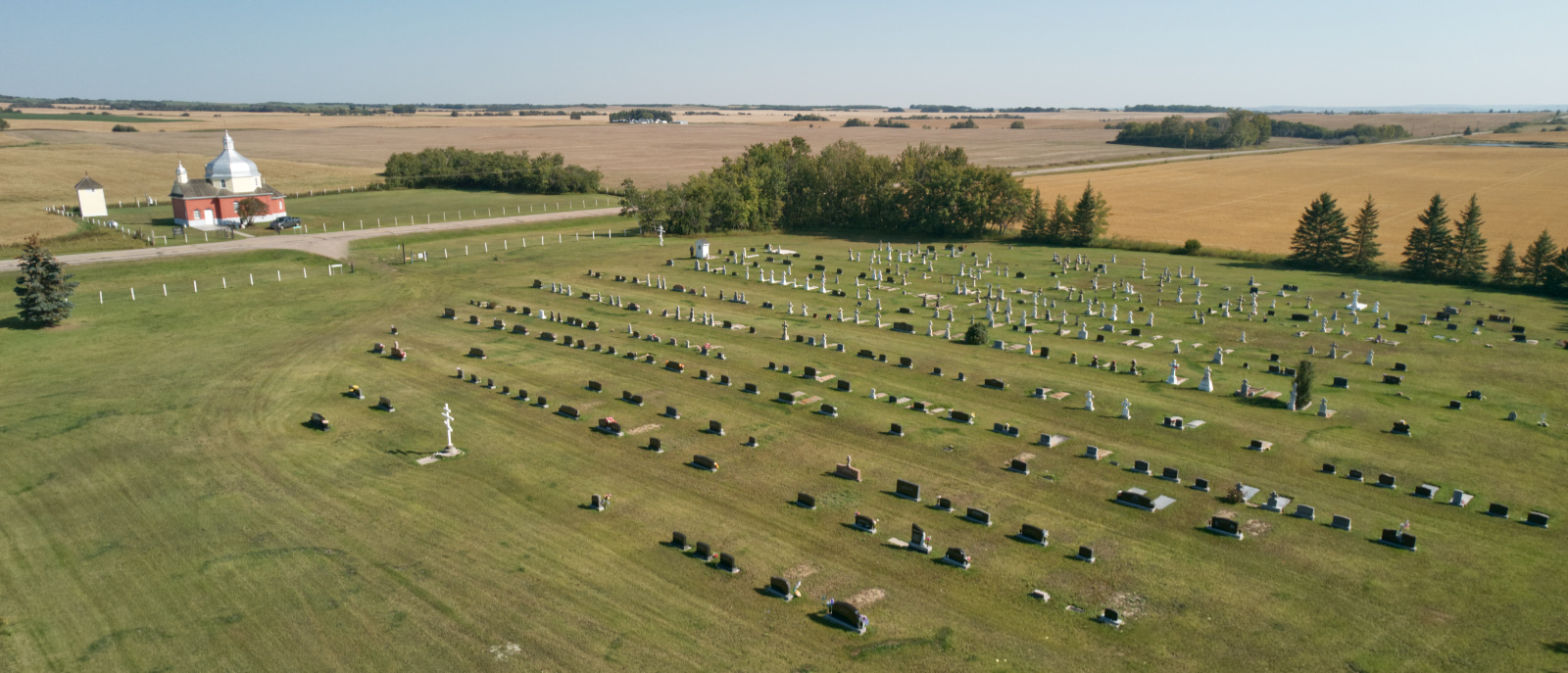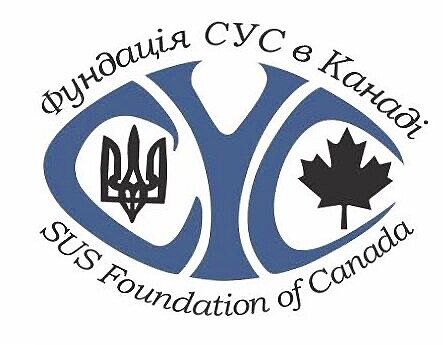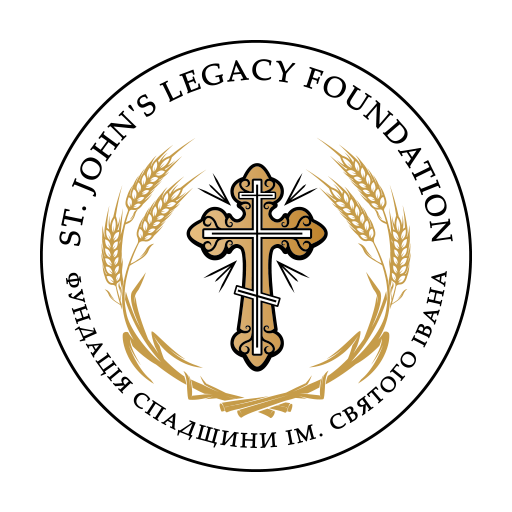In 1907 the Orthodox settlers of the Szypenitz area acquired 45 acres of land for a cemetery (at NW 22-55-13 W4), that same year erecting a small log church to serve as their place of worship. The interior of this simple, gable-roofed structure, which did not have a dome, was finished with wide boards purchased in Vegreville. Priests with the Russian Orthodox mission based in Shandro and Boian initially attended to the needs of the faithful, whose resolve was soon tested when their modest sanctuary mysteriously burned to the ground sometime in 1909-1910. A new and larger church was subsequently constructed in 1913 on the site of the cemetery under the supervision of Harry Osiecki (Hryhorii Osietski). Each member donated $5 toward the lumber obtained from Vegreville, and afterwards assisting with their volunteer labour.
On 14 June 1916, three days after the Pentecost, Szypenitz church again burned down due to suspicious but unknown causes. It was believed by many area residents that the destruction of the church was provoked by confessional rivalries.
This time the new church was erected across the road from the cemetery (at SW 27-55-13), in the hope that the new sanctuary would escape the unhappy fate of its predecessors. Forty acres of land were purchased for $80.00 from Petro Eliuk. Once more Harry Osiecki was commissioned to oversee construction, using mostly volunteer labour and materials obtained from Gordon's Hardware Store in Vegreville. The tripartite structure with an apse, completed in 1919, is said to resemble the church in Osiecki's native village, featuring a large central dome, with a small dome over the narthex, as well as an entrance that is on the southwest side of the church. The design of the new edifice was also apparently based on the wooden variant that preceded it, providing a measure of continuity for beleaguered churchgoers and serving as a symbol of their determination in the face of adversity.
A wooden bell tower was subsequently put up in the southeast corner of the churchyard, and while its three bronze bells occasionally used to be rung to signal trouble in the community— such as a fire, or an emergency—they now only peal during customary religious observances.
St Mary's church has been a place of joyous and solemn commemorations marking the spiritual life of the Szypenitz community since the first decade of the century. As in most rural congregations, the number of the faithful has dwindled with urbanization, especially since the Second World War.
However, the pride which members feel about their sanctuary is still evident in the well-maintained churchyard and cemetery, which in the 1980s were further enhanced by the addition of two wrought-iron gates donated by Dan Lutzak and Frank Lakusta. In 1987, recognizing the historical importance of the Nativity of the Virgin Mary, the government of Alberta granted the church official designation as a historic site. Various repairs were then made to restore and preserve the structure for future generations, while a generous donation from member John Taschuk in 1986 helped to establish a Trust Fund devoted to the perpetual care of the cemetery.
The Cemetery
The first burial was that of Metro Wenechuk, followed a week later by the interment of two children who had died in a local diptheria outbreak, Kondrat Rusnak and Maria Eluk. The early crosses were made of wood, the inscriptions being applied with a tar-based black paint called 'antramate' that very effectively permeated the wood. As was customary, controlled grass-burnings were periodically used to clean the cemetery before major religious observances that focussed on the graveyard. Unfortunately, in the course of being prepared this way for Easter one year, an unexpected flare-up resulted in the destruction of almost all of the oldest wooden grave markers. This prompted many Szypenitz church-goers to purchase more durable markers from a Boian-area man named Tkachuk who specialized in the manufacture of cement crosses. Although some members of the congregation obtained metal crosses instead, these proved to be less popular because of their long-term susceptibility to rust.
Of special interest are the graves of Maria (1877-1960) and Symeon Megara (1871-1958), which are separated by a booth-like structure with a door and glass window. Inside this little "chapel", on a small table, there is a colour reproduction showing the Austro-Hungarian Emperor Franz Josef and his family. This military service document, on which apparently there was written a dedication to Hryhorii and Elesaveta Verenka and their deceased children, is a testament to the strong sense of loyalty which many immigrants from Western Ukraine felt toward the Hapsburg monarchy.

Play Memory Eternal Chant
Visit this Cemetery
GPS Co-ordinates: 53.773487,-111.849963
Cemetery Co-ordinates: 53.772789,-111.850125
Affiliation: Ukrainian Orthodox Church of Canada



 Financial support generously provided by:
Financial support generously provided by: 